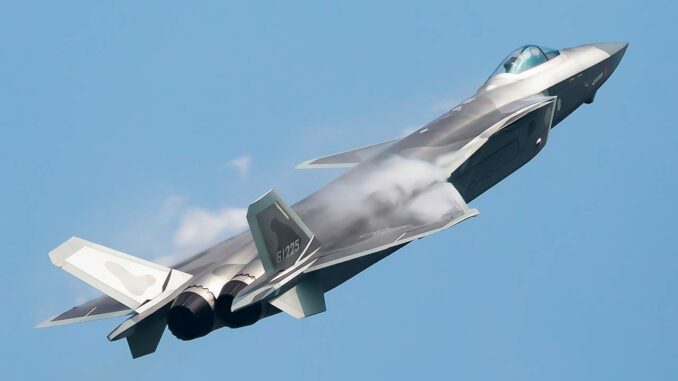
Detailed analysis of China’s fighter fleet modernization, key figures, and its strategic impacts to 2030.
China’s fighter fleet is pursuing a rapid modernization aimed at replacing 3ᵉ generation aircraft with 4.5ᵉ and 5ᵉ generation fighters by 2030. With an annual production of 135 to 160 new aircraft, China exceeds the renewal capacity of the United States. The massive arrival of J-20s, combined with J-10s and J-16s, could enable it to rival the US Air Force from 2035 onwards. This transformation is part of a broader strategy of air and sea domination in the Asia-Pacific region.

The rapid transformation of the Chinese fleet: figures and prospects
China’s fighter fleet is undergoing rapid transformation. In 2024, out of a total of 1,800 combat aircraft, around 700 were still from the 3ᵉ generation, such as the J-7 and J-8. This figure is down sharply from 1,400 in 2018. This development is the result of a ramp-up in Chinese industrial capabilities.
Key data:
- Annual production: 135 to 160 new aircraft.
- J-20 (5ᵉ generation): 70 to 80 units per year.
- J-16 (4.5ᵉ generation): 35 to 50 units per year.
- J-10C (modernized 4ᵉ generation): around 30 units per year.
- Objective: a homogeneous fleet by 2030, comprising 4.5ᵉ and 5ᵉ generation fighters.
This rate will enable China to surpass the United States in terms of production. By comparison, the US Air Force receives 48 to 60 F-35As per year. This difference in pace underlines Beijing’s ambition to achieve technological and numerical parity.
J-20 fighters: spearheading China’s 5ᵉ generation
The J-20, a 5ᵉ generation stealth fighter, symbolizes the rise of the Chinese air force. Since its entry into service, over 200 examples have been delivered. Featuring advanced features, it is designed to rival the F-22 Raptor and the American F-35.
Technical specifications:
- Length: 20.4 meters.
- Maximum speed: approx. 2,400 km/h.
- Range: 1,100 km (without refuelling).
- Payload: up to 12 tons of weapons.
The J-20 is powered by WS-10C engines, but tests with the new WS-15s are underway to improve performance. China is also banking on the integration of artificial intelligence technologies to optimize combat and reconnaissance missions.
The other pillars of modernization: J-16 and J-10C
In addition to the J-20, the J-16 and J-10C fighters play a central role in this transformation.
- J-16: A multi-role bomber inspired by the Russian Su-27, it is optimized for precision strikes. Annual production fluctuates between 35 and 50 units.
- J-10C: Replacing the J-7, it offers a versatile, modernized solution. Producing 30 units a year, it is an effective addition to the fleet’s capabilities.
These aircraft, combining local technology and adaptations of foreign models, reinforce China’s strategic flexibility.

Strategic impact and geopolitical consequences
The modernization of China’s fleet has major implications for the balance of power in the Asia-Pacific region. By strengthening its air capabilities, China aims to secure its strategic interests, particularly around Taiwan and in the South China Sea.
Main consequences:
- Regional superiority: China could match or exceed the US Air Force’s capabilities in the region by 2035.
- Power projection: The new capabilities of the J-20 and J-16 provide long-range strikes and enhanced support for its naval forces.
- Industrial influence: China’s production rate is putting pressure on other powers, particularly in terms of cost and innovation.
Towards a complete transformation by 2030
The rapid modernization of China’s fighter fleet marks a key stage in Beijing’s military strategy. By 2030, the transition to a seamless fleet of 4.5ᵉ and 5ᵉ generation fighters is likely to be complete. This will strengthen China’s strategic position in the Asia-Pacific and redefine the global balance of power in military aviation.
War Wings Daily is an independant magazine.